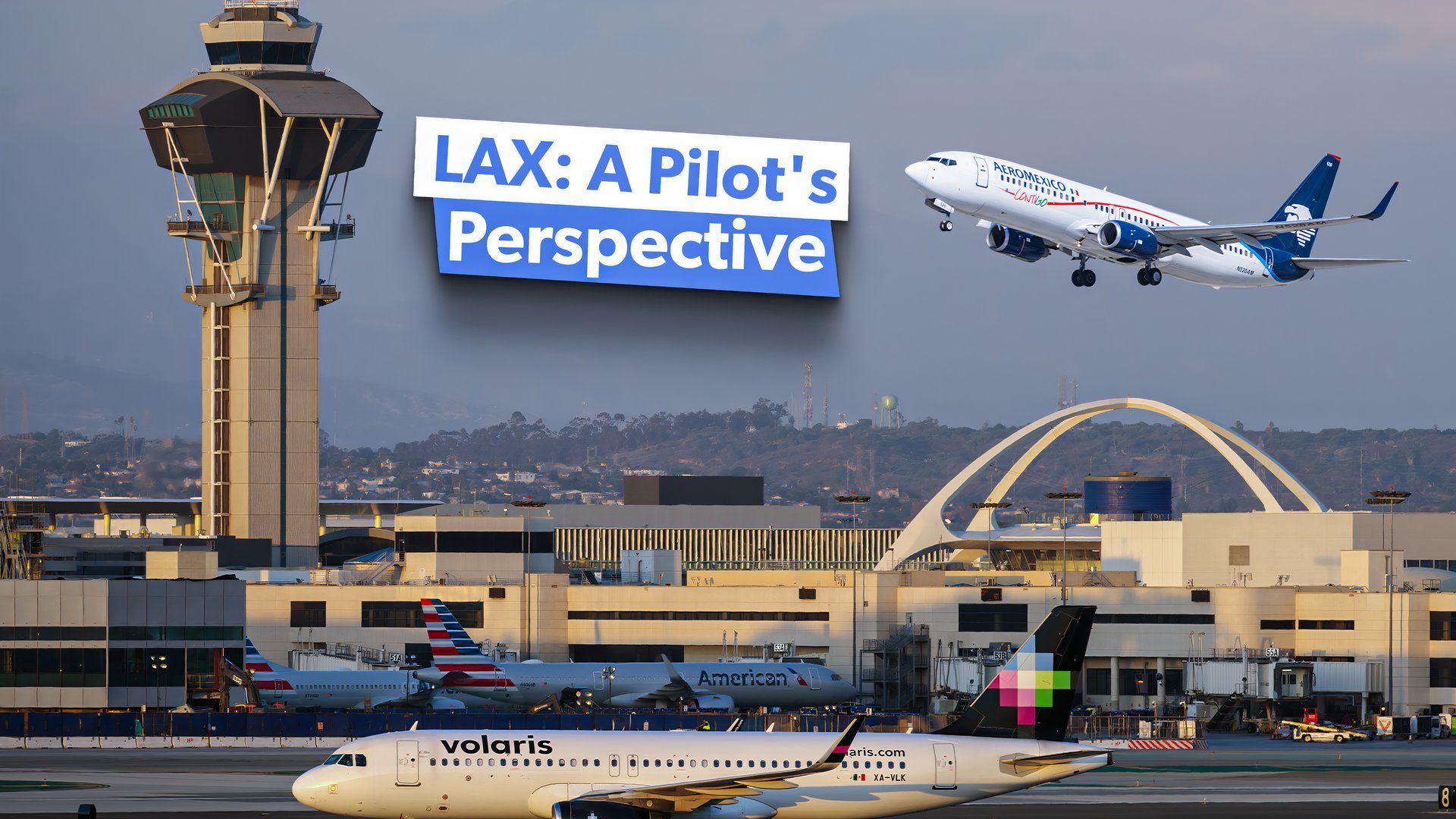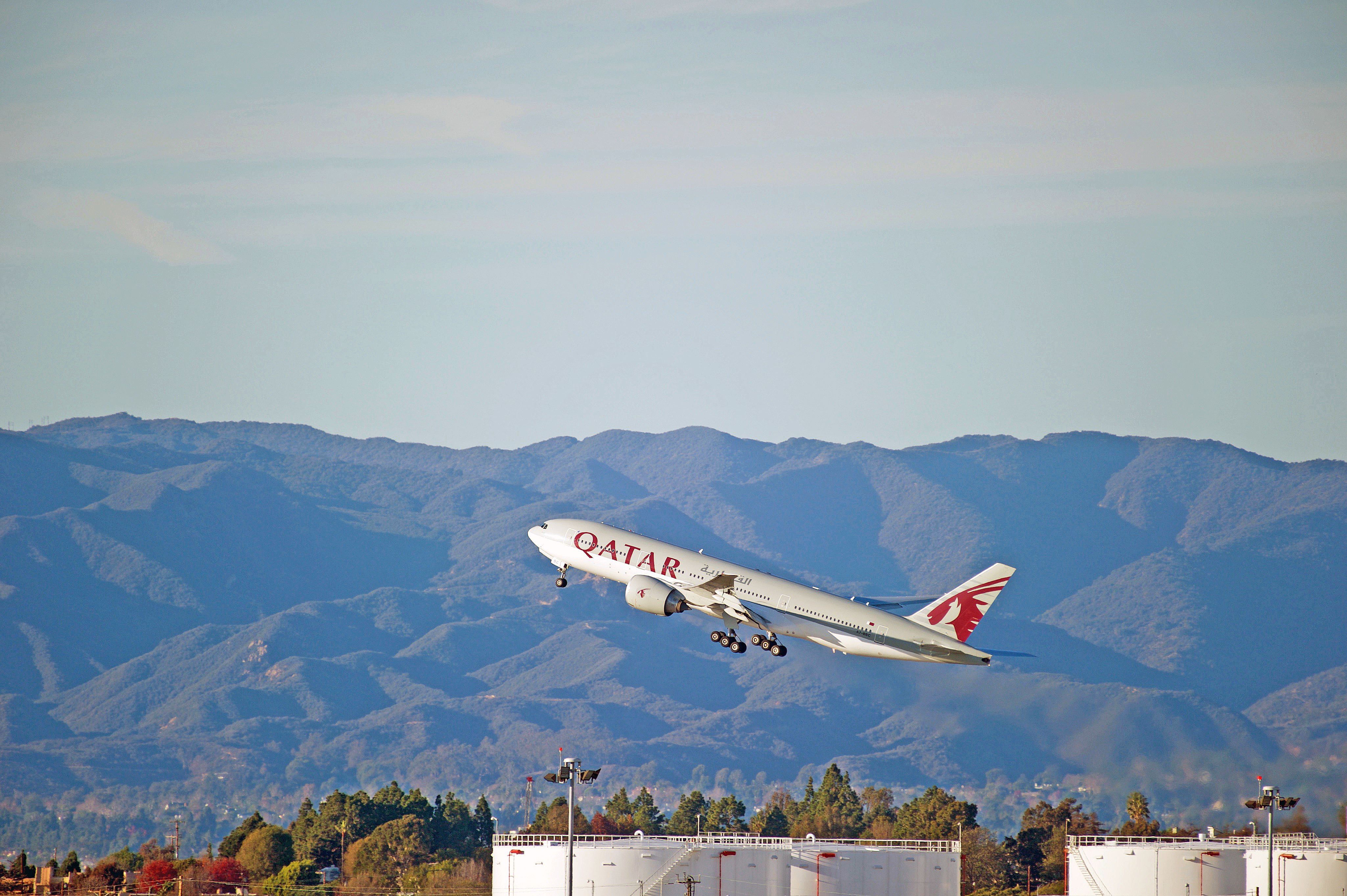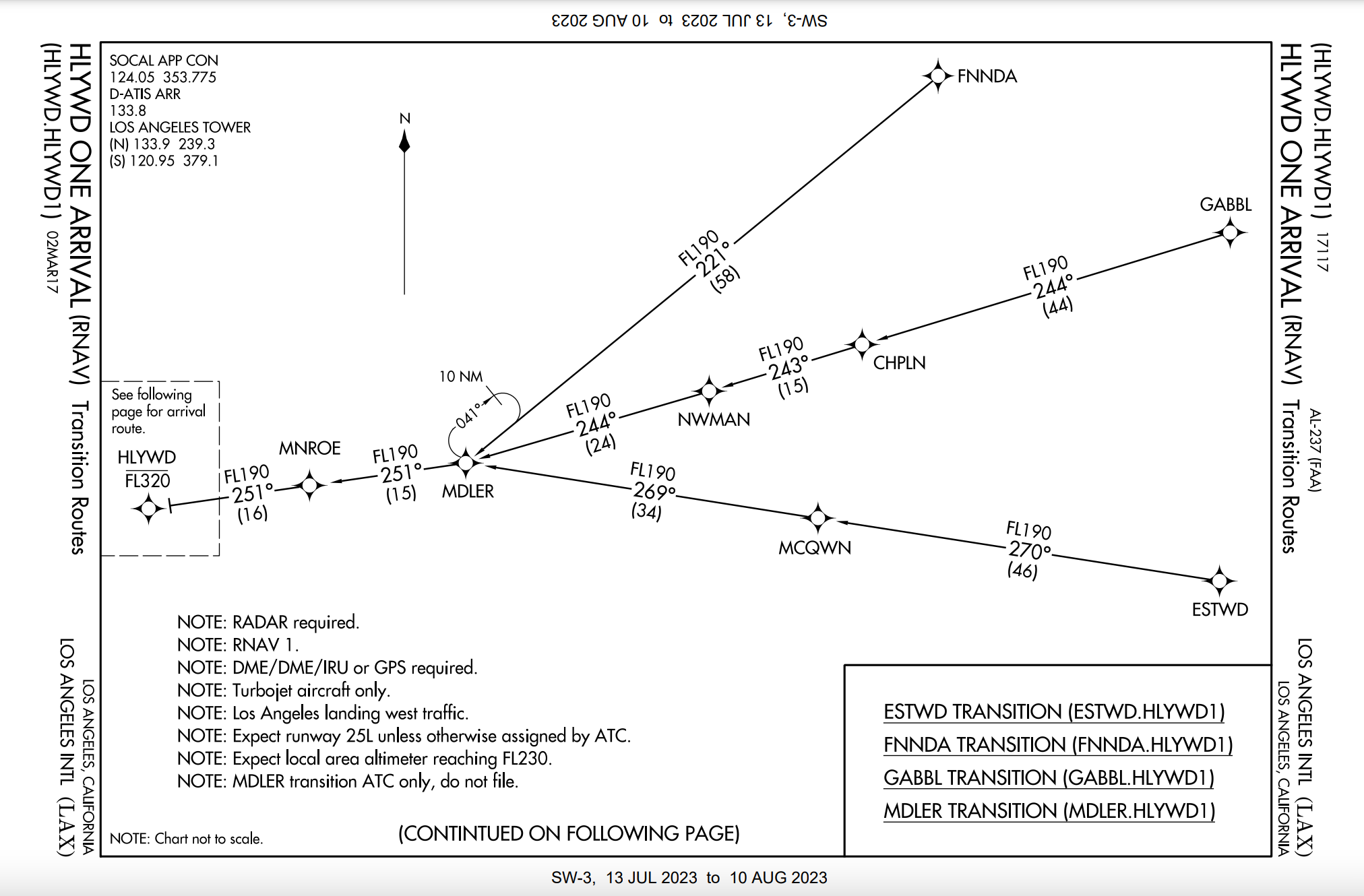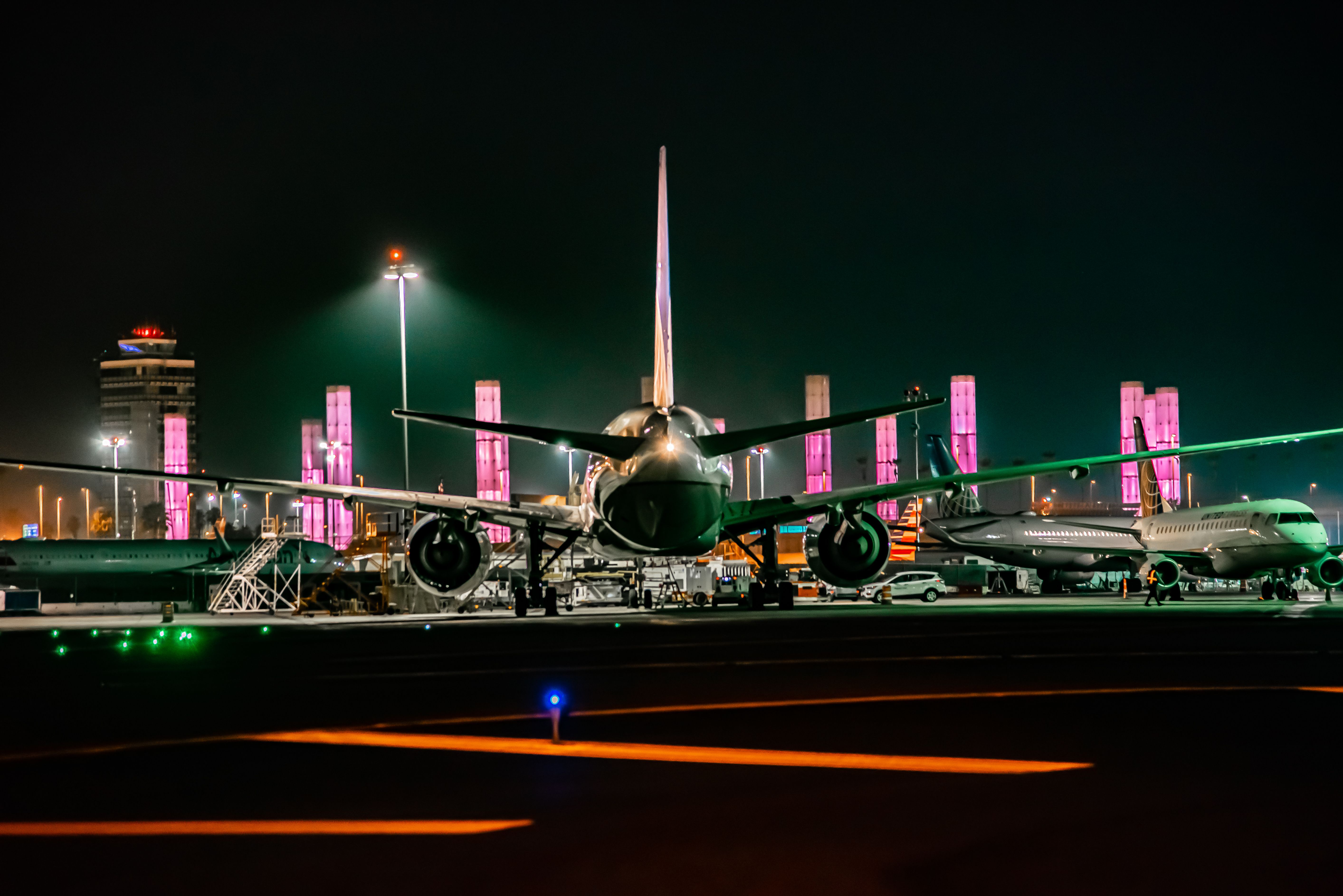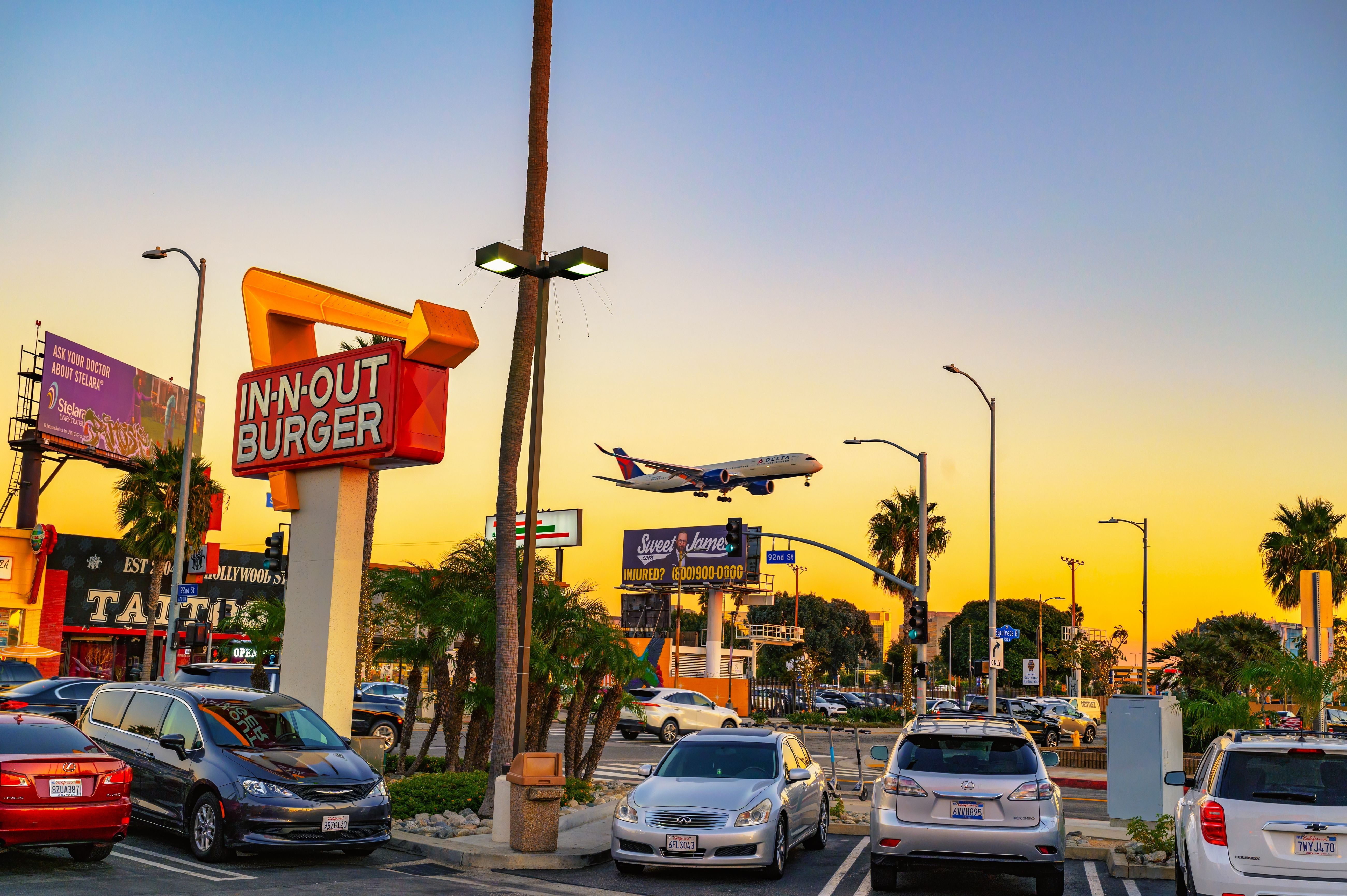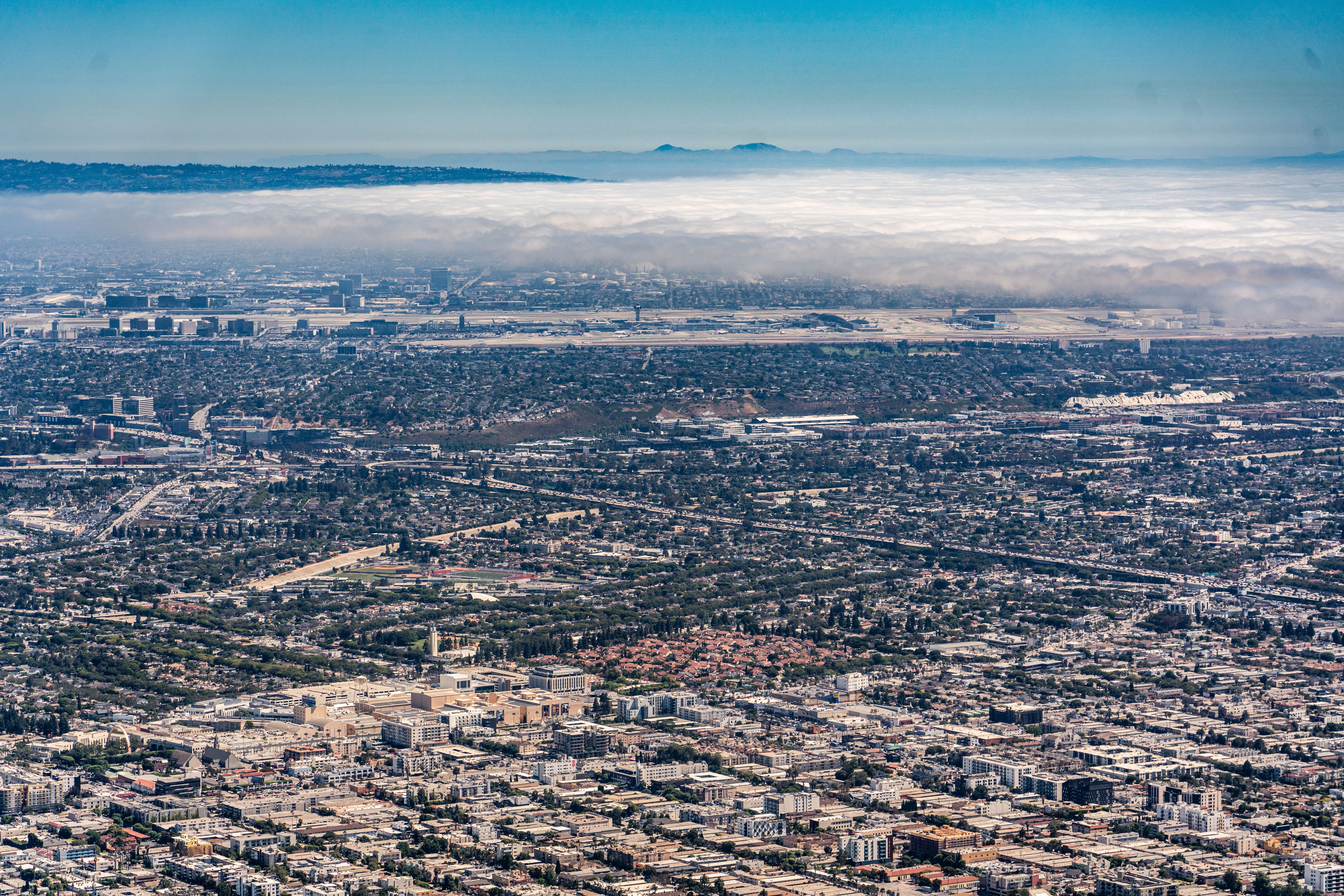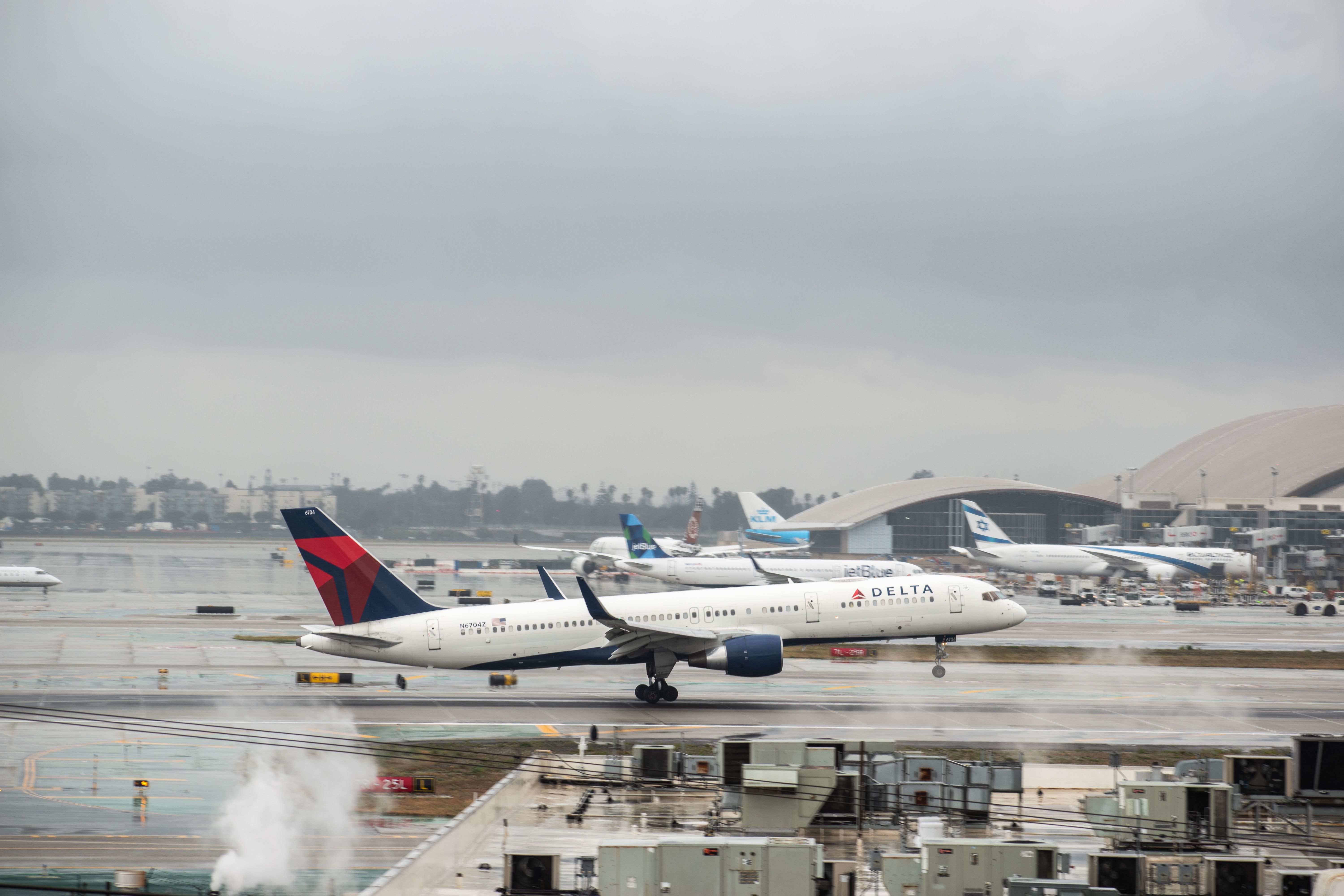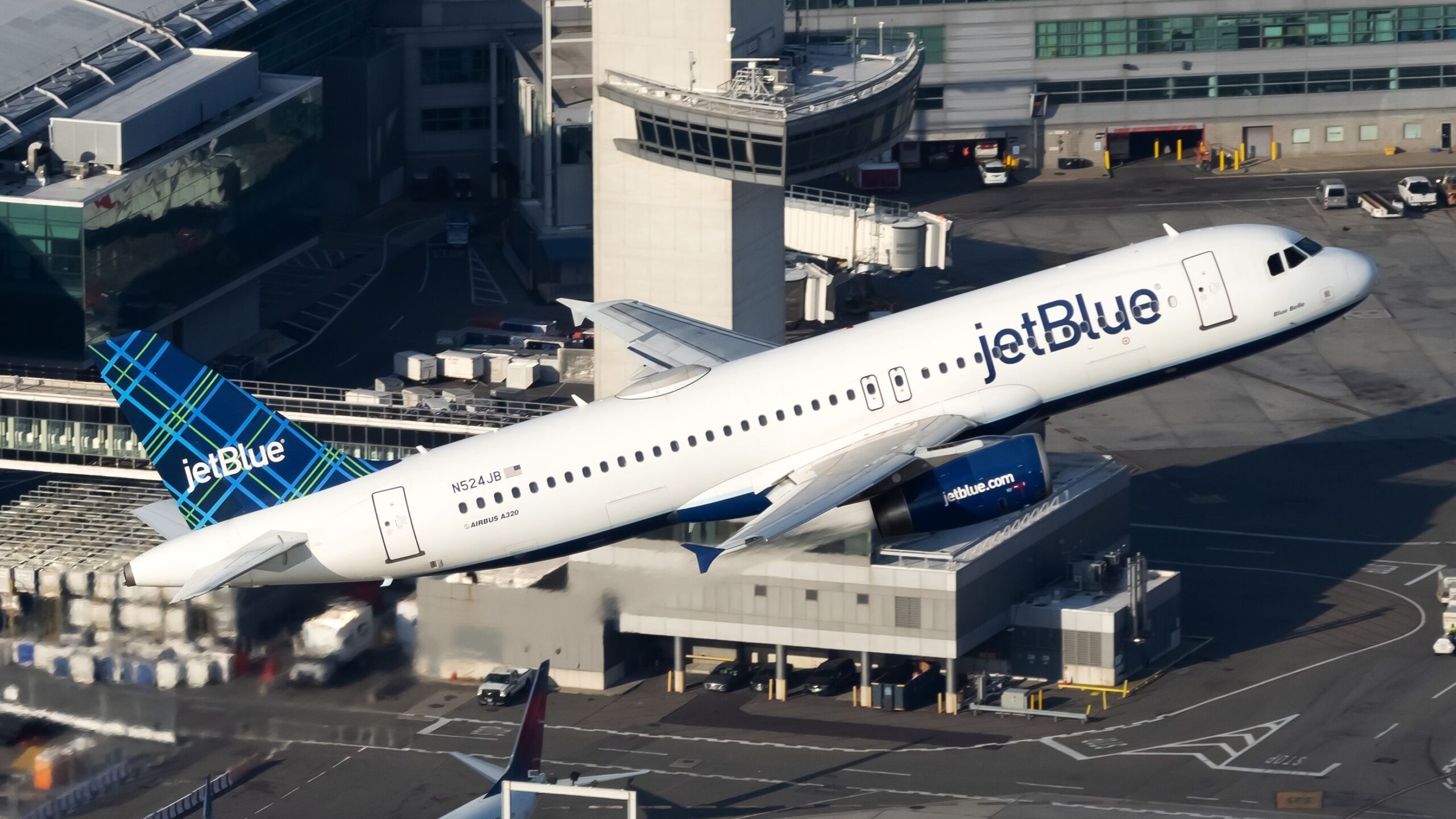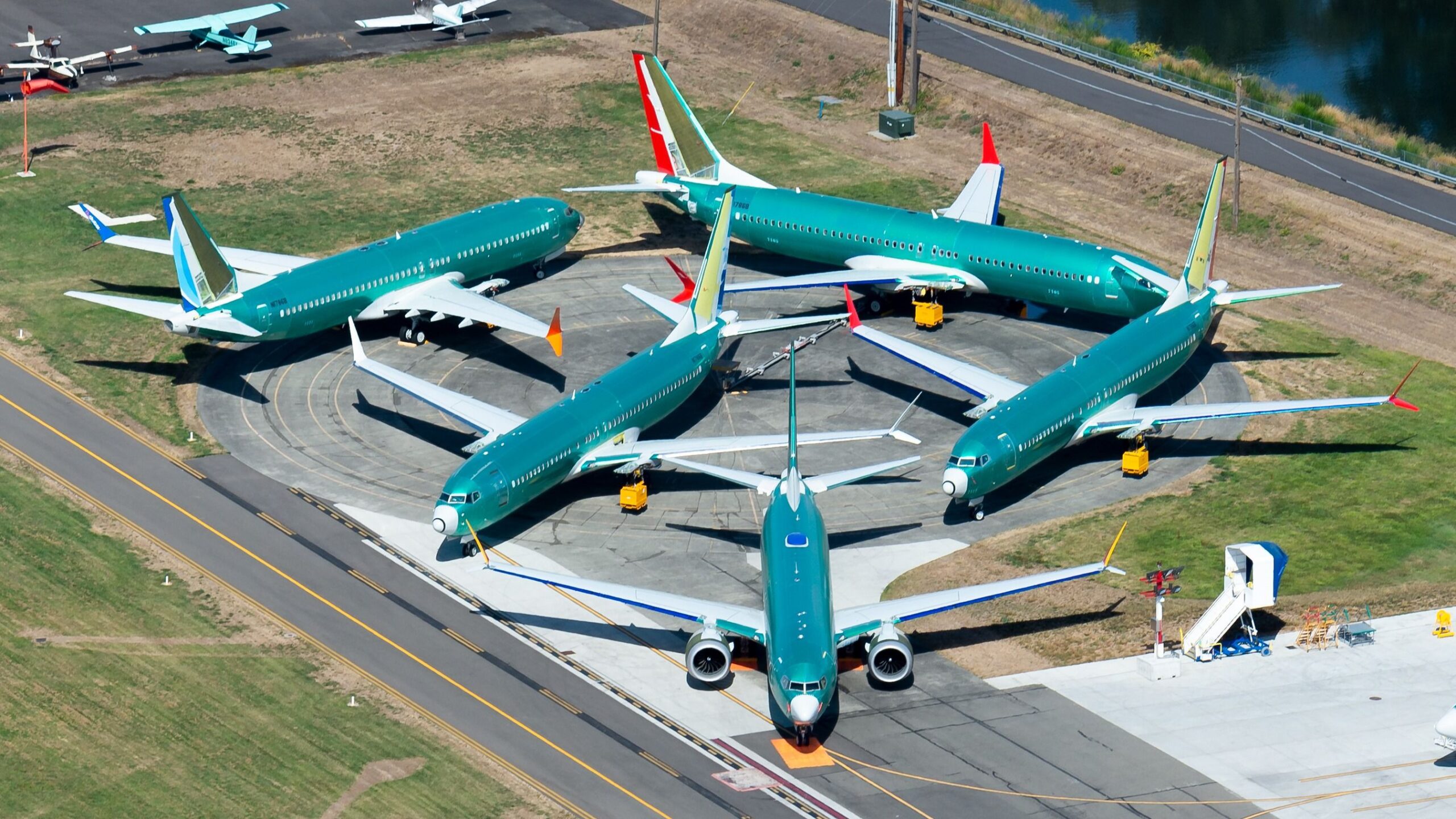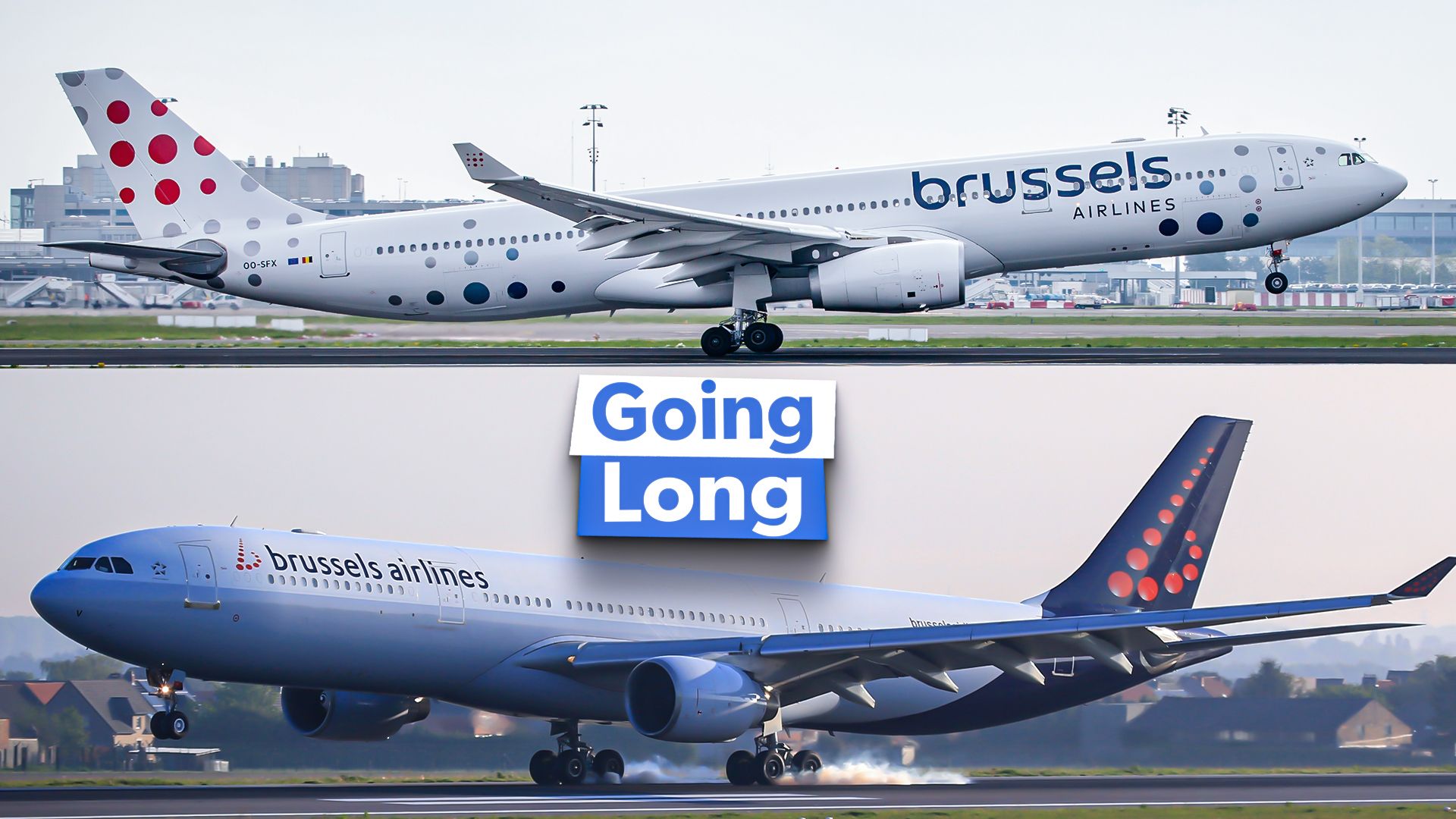Summary
- LAX is the most prolific origin & destination airport anywhere in the world.
- It is home to crew bases for nearly every major US airline.
- LAX’s approach clearances are unique, often issued 50+ miles away, with special transition waypoints.
Anyone who knows anything about aviation knows what the letters “LAX” stand for. For that matter, nearly every American and countless others worldwide have a tacit understanding of what these three letters signify: Los Angeles International Airport. Los Angeles is one of the world’s busiest and most iconic airports. It’s an origin and destination for tens of millions of people annually, the crew base for thousands of pilots and flight attendants, a global juggernaut for cargo operations, and the gateway to one of the most prominent cities in the world. This article is an in-depth analysis of LAX and what it’s like to be a pilot at this mega airport.
Take me to LA
Los Angeles International Airport is nearly 100 years old, having opened in 1928. It has seen plenty of expansion since then, from the construction of the Tom Bradley International Terminal in 1984 to the installation of the iconic light towers on World Way in 2000 for the Democratic National Convention. LAX is seemingly constantly under major construction. The current largest project on the passenger side of the operation is an automated people mover designed to shuttle passengers between rental cars, offsite dropoff locations, and the greater LA metro system. This project is slated to be completed by the 2028 Olympics.
Perhaps the most distinct statistic that LAX boasts is the title of being the world’s most prolific origin and destination airport. According to Los Angeles World Airports (the airport’s operating firm), LAX sees more passengers originating for their trips than any other terminal. Simultaneously, the airport is the final destination for most passengers anywhere globally. While other mega-airports like Dubai, Atlanta, and London have larger passenger numbers, no other airport is the destination in the way that LAX is. This is a testament to the tourist industry in the greater Los Angeles area and a reminder of just how populated the metro area is.
Everyone’s hub
It’s evident that countless global airlines fly to LAX —the rainbow of liveries at the “TBID” international terminal on any given afternoon rivals any other airport. On the domestic side, US airlines see value in making the airport a crew domicile since nearly every company maintains an LAX base. Remarkably, all “Big Three” airlines (American, Delta, and United) have bases at LAX. Additionally, Southwest Airlines, the largest domestic operator in the country, likewise maintains a base at LAX. You might think these major airlines would absorb most of the market, but JetBlue, Spirit, Allegiant, Alaska, and SkyWest all have crew bases specifically at LAX.
Most airports, even large ones, have enough traffic and demand to support no more than two or three major airline crew domiciles. The fact that LAX houses nine passenger airlines’ crew operations proves that the airport is in a league of its own. With so many airlines, as well as Angelino’s dependence on cars, comes the need for lots of employee parking. Multiple car parks are scattered around the periphery of the airport’s grounds, and shuttles run between them and all nine terminals.
Buses have their dedicated inner lane on World Way, the horseshoe road around LAX’s terminals. This helps employee and passenger shuttles avoid the horrific traffic on World Way that exists nearly every hour of the day. Many LAX employees (gate agents, mechanics, ground handlers) ride electric scooters and bikes from their cars to the terminals. Since the weather is nice in LA year-round, it makes sense for folks who would otherwise have to ride the buses daily to ride their e-scooter. Pilots who drive to work can also walk to and from the terminals, which can’t be done at most large airports. Funnily, walking is often faster than riding the bus. It is LA, after all!
Operational predictability
LAX is one of the few airports to feature four parallel runways. Daytime operations are very straightforward for pilots: You depart from runways 25R or 24L (the inboards) and land on the outboards (25L or 24R). This pattern occurs nearly every day of the year from 6 a.m. until midnight since the wind almost always blows off the ocean from west to east.
Photo: Philip Pilosian | Shutterstock
LAX commences its quiet overwater operations at around midnight, so long as the prevailing winds allow (which they usually do). This means that planes depart from the south complex to the west while arrivals land eastbound on the north complex (or vice versa). It’s pretty cool to see a plane flying past you in the opposite direction on its initial climb while you’re descending through 1,000 feet just before landing.
It’s very unusual for big airports to entertain this kind of operational anomaly, but there’s enough spacing between the runways at LAX to make it work. On rare days, the airport’s entire operation is an easterly flow. This is more typical between October and March when the Santa Ana winds kick up.
Waypoint nomenclature
LAX’s arrivals, departures, and approaches have some of my favorite waypoint names. The HLYWD 1 RNAV arrival was the first of many procedures with cool waypoint names I wrote about in a series on the topic last year. It features iconic Hollywood names like Clint Eastwood, Marilyn Monroe, Bette Midler, Steve McQueen, Charlie Chaplin, Clark Gable, and Henry & Jane Fonda. Most eastbound arrivals are instructed to descend via the HLYWD 1, an LAX staple.
Photo: FAA
The HLYWD 1 arrival is built to connect directly to approaches for all four eastbound runways at LAX. As mentioned, 24R and 25L are the predominant landing runways. For the last few years, the final approach fix (FAF) for 24R has been called “KOBEE,” and 25L’s FAF has been named “GIGII.” The names of these waypoints are a tribute to the late NBA basketball star Kobe Bryant and his daughter Gianna, who died in early 2020 in a helicopter crash in Calabasas. Bryant was a five-time NBA champion who played for the Los Angeles Lakers for all 20 years of his career.
Departing LAX to the east most likely means that the pilot’s clearance will contain the ORCKA 5 or OSHNN 1 RNAV departure. The first waypoints off the departure runways are usually DLREY and DOCKR, homages to some of the coastal areas just off the airport: Marina del Rey and Dockweiler Beach. Flying these departures on a clear day guarantees a fantastic view of the LA area. After flying vectors over the Pacific Ocean, ATC turns pilots around (usually directly over the LAX airport) so that they come back over the coast around 8-10,000 feet. The views are some of the best anywhere, and they’re also easily visible from the passenger windows.
Early approach clearances
Flying under instrument flight rules in the US always requires an approach clearance, whether for a visual approach on a nice day or an instrument approach if visibility is lower than VFR. Approach clearances are issued by approach controllers who oversee planes within an airport’s terminal area. It’s typical to receive an approach clearance about 10-20 miles away from the landing airport, but LAX terminal radar controllers tend to give approach clearances much further away than this.
Photo: Los Angeles International Airport
It’s common to be cleared for an approach while still 50 or more miles from LAX. For context, pilots are often somewhere just east of the Ontario, CA airport when their approach clearance into LAX is given. It usually sounds like “Flight 123, descend via the Hollywood 1 arrival, runway two-four right transition, cleared ILS runway two-four right.” Pilots get cleared to descend via an arrival and for an approach on nearly every flight, but for the two statements to be issued in the same breath is very unique.
Photo: Nick Fox I Shutterstock
The approaches to all the westerly runways at LAX have common transition waypoints at the end of the arrival procedures that funnel traffic in from the east. This is what allows approach controllers to issue the two clearances at once. This makes it easy for pilots since they know what their runway assignment will be from a long way out, and it also allows them to use the flight management computer to manage their descent path to the runway from a much longer distance away than is possible at other airports.
The only difficulty arises when the controllers request unpublished speeds, which often happens since they are sequencing “heavy” and “super” arrivals from various directions to a common runway with other traffic. Pilots control speed while adjusting their descent profile to meet spacing requirements for wake turbulence when this happens.
Where’s the airport?
LAX is almost directly on the coast of the Santa Monica Bay, part of the greater Pacific Ocean. A thin stretch of land and Dockweiler State Beach separates the western edge of LAX from the water. As such, it’s common for LAX to experience localized coastal weather patterns that diverge significantly from most of the rest of the LA metropolitan area. Specifically, LAX is very susceptible to fog that rolls in around sunset and stays over the airport until a few hours after sunrise. This is most prominent from May through mid-July.
Photo: Mario Hagen I Shutterstock
Angelinos are familiar with “May Gray” and “June Gloom,” which refer to the low clouds that persist for the first few miles inland from the coast during these months. The cool ocean temperature mixes with the relatively warmer air above it and forms an “inversion layer” during this time of year, which results in fog for the coastal areas of the LA basin.
Nowhere is this specific coastal phenomenon better felt than at the airport, since it’s right on the water. It’s common to approach LAX from the east and have a clear view of the Hollywood Sign and downtown LA while not being able to see the airport. Instead, the first two or three miles of land off the coast are shrouded in a thin layer of fog. Pilots enter this layer at about 1,500 feet and break out of it somewhere just above the minimum descent height for the approach. This kind of fog usually lifts before noon.
LAX in a nutshell
LAX is an iconic airport, and I’m happy to call it my home base. Easily identifiable by the architecture of the Tom Bradley Concourse, the light towers on World Way, its expansive nine-terminal layout, and the countless airlines that serve the airport, LAX is an airport in a league of its own. Though getting to the airport can be challenging, engineers are constructing better, more efficient ways for passengers and staff to access the airport across the LA area.
These projects should be complete by the time the Olympics roll around in 2028. In the meantime, LAX will continue serving around 80 million people annually, many of whom are arriving or departing for a visit to one of the world’s most iconic cities.
Photo: Lisa Bronitt I Shutterstock

